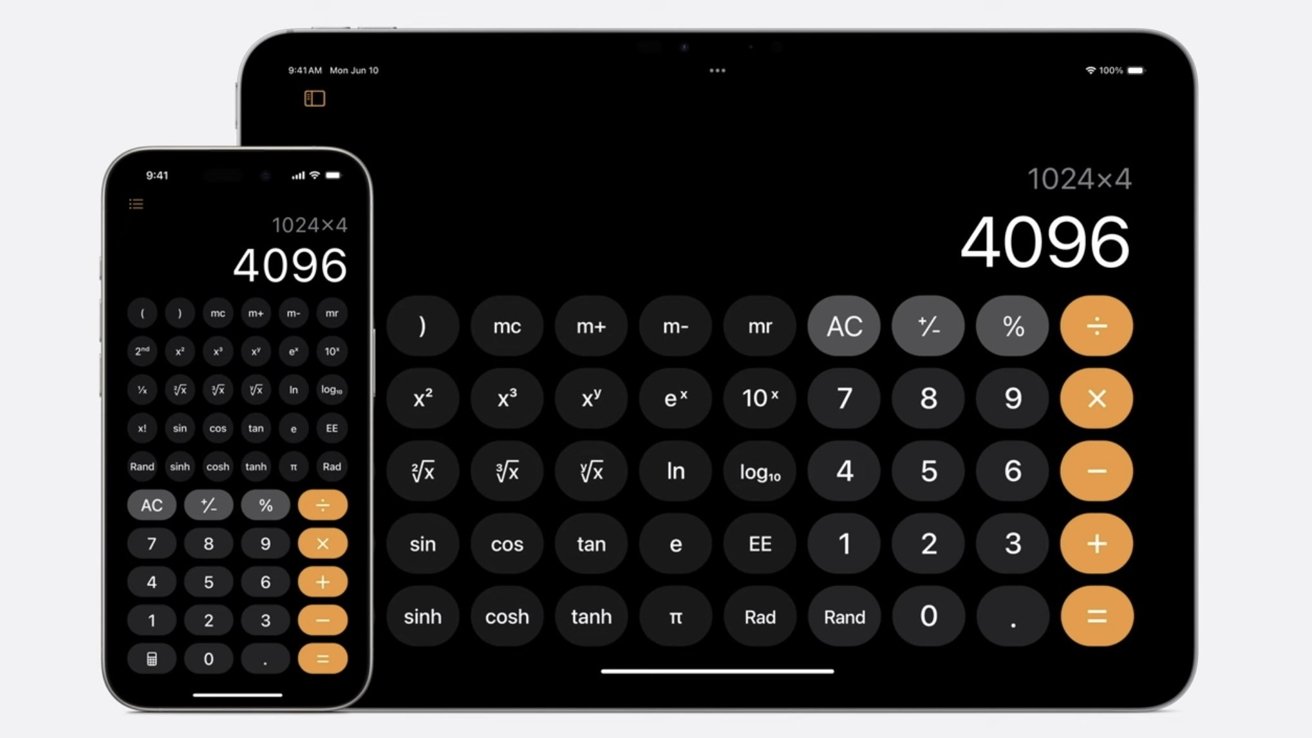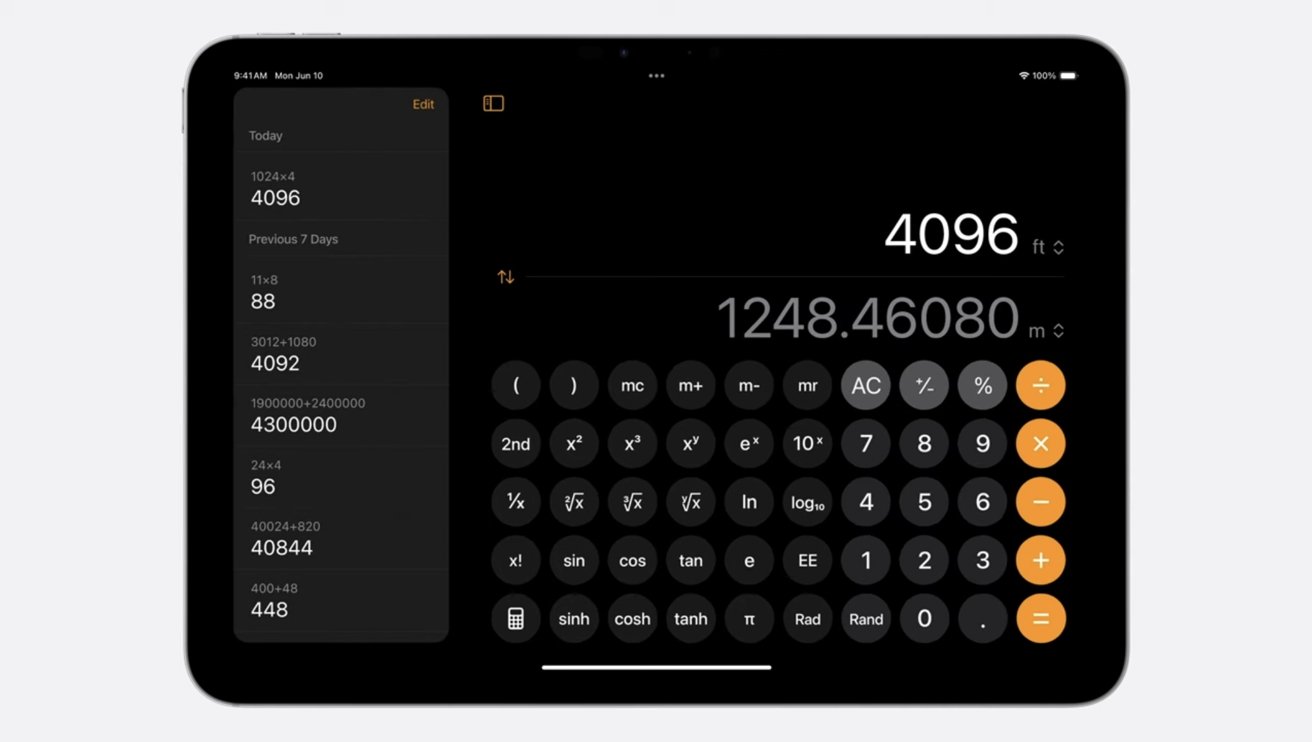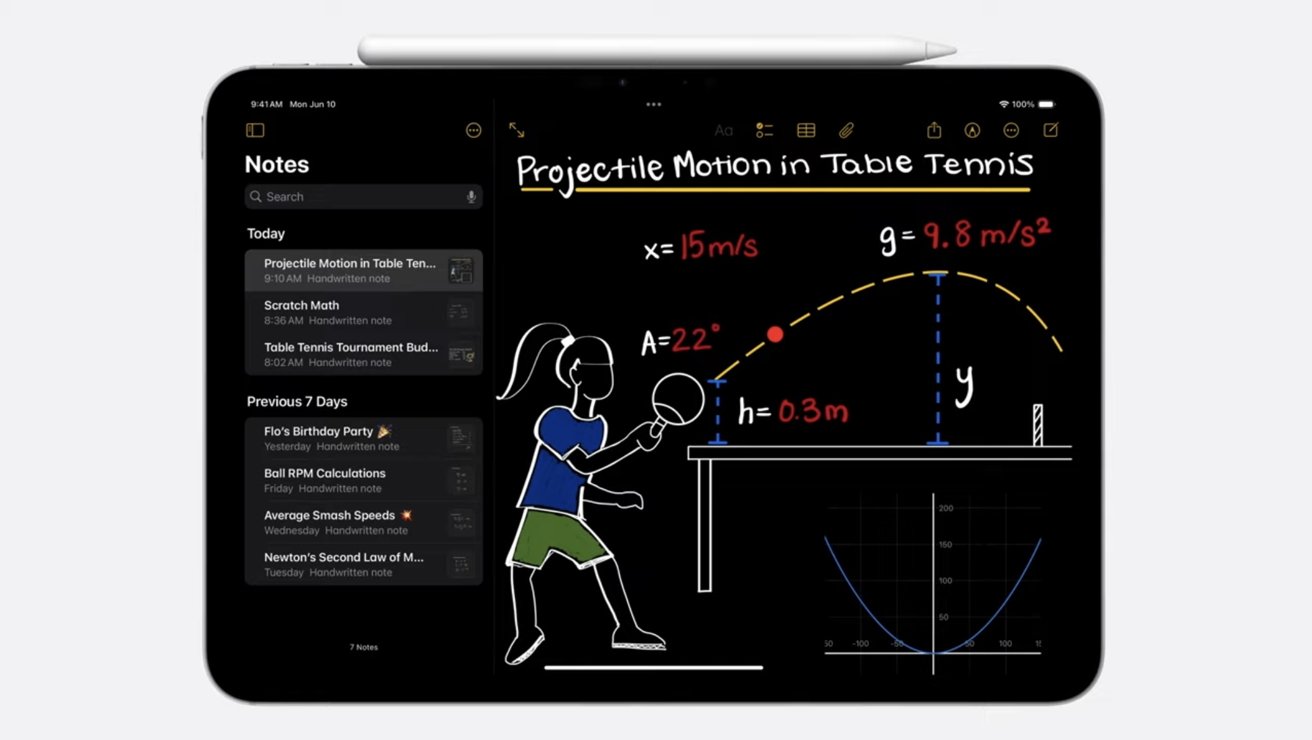
The Calculator app is now available on iPad with iPadOS 18

Apple’s native Calculator app is finally available on iPad in iPadOS 18, and with it come new UI elements and support for mathematical notation through the Math Notes feature.
At the company’s annual WWDC on Monday, Apple revealed that the iPad would receive a dedicated Calculator application with the iPadOS 18 update. The new application will be able to take advantage of the iPad’s larger screen, with a device-specific layout.
Apple’s new universal Calculator application was originally created in September of 2023, under the codename Project GreyParrot. AppleInsider exclusively revealed the confidential project and its features in April, months ahead of launch.
The Calculator app now has a similar look across Apple’s different platforms – iPhone, iPad, and Mac. The app features round buttons, with shades of black and orange.
For reference, the iPad never had a dedicated Calculator application until now, while the one on macOS Sonoma still featured a design introduced about a decade ago with macOS 10.10 Yosemite.
The application features different improvements such as a dedicated history tape sidebar, which can be activated from the top left of the application window, along with a greatly improved unit conversion system.

Apple’s new universal Calculator app features a history tape sidebar along with an improved unit conversion system
The history tape will make managing information significantly easier, as users will no longer need to move between apps to check calculation results.
Math Notes is one of the most significant improvements of Apple’s new Calculator application. Users can access the feature through a dedicated button in the bottom left of the app window.
This feature was revealed exclusively by AppleInsider, in our April report on Apple’s new Notes application. The Notes app has the exact same capabilities as Math Notes within Calculator.
Users can open Math Notes through a new button at the bottom left of the Calculator app window. Inside Math Notes on iPad, it’s possible to write advanced expressions with their Apple Pencil.
Once an equals sign is written, the application will auto-complete the expression for the user, and the results change whenever the expression is modified in any way.
Math Notes supports the same functions as Apple’s scientific calculator view, as well as variables. This means that users can write out an expression with different variables, and the application will complete it or adjust the result if variables are changed.

Math Notes supports variables and graphing expressions
With this feature, users will be able to work on complex physics problems. During the event, Apple demonstrated that users could calculate the maximum height of a table tennis ball when hit at different speeds or angles.
Math Notes also supports graphing expressions, meaning that users will be able to instantly generate a graph within the app. AppleInsider first revealed this functionality in our report on Apple’s AI initiative, which was codenamed Project Greymatter.
Managing information on different calculations, physics problems and the like will become significantly easier with Math Notes. It will also likely decrease users’ reliance on third-party products such as Calcbot, Soulver 3 or PCalc.
These new enhancements for Calculator will serve to benefit a wide array of users, from students to those in the engineering sector. According to Apple, Math Notes will also be useful for day-to-day calculations.
As mentioned earlier, the revamped Calculator app is a universal application – meaning that it will be available on iOS 18, iPadOS 18, and macOS Sequoia, all of which were recently announced at WWDC.




